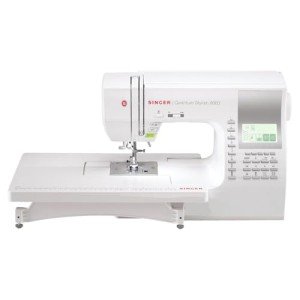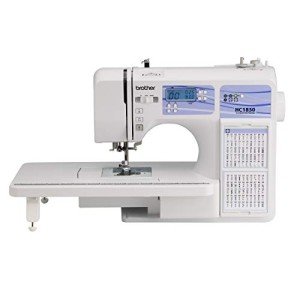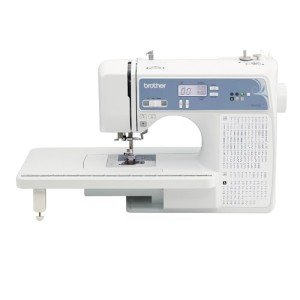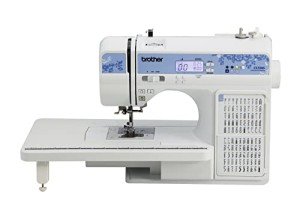Sewing a zipper is one of the most valuable skills to master in sewing, allowing you to add functional and stylish closures to garments, bags, and home decor. While it can be intimidating for beginners, with the right techniques and practice, sewing zippers can become a simple, rewarding process. In this guide, we’ll break down the steps to sew different types of zippers and provide tips for achieving a flawless finish every time.
Types of Zippers
Before diving into sewing techniques, it’s important to understand the different types of zippers and how they’re used in various sewing projects.
- Standard Zipper (Center Zipper): A common zipper that’s sewn with equal fabric on both sides, leaving the zipper teeth visible.
- Invisible Zipper: This zipper is sewn so that the zipper teeth are hidden inside the seam, leaving only the pull tab visible.
- Exposed Zipper: Used for decorative purposes, this zipper is sewn onto the surface of the fabric, with the teeth fully visible.
- Separating Zipper: Often used for jackets and outerwear, this zipper opens completely, separating the two sides of the garment.
Step 1: Choose the Right Zipper and Foot
The type of zipper you choose will depend on your project. Make sure to select the correct length and color that matches your fabric. Additionally, most sewing machines come with a zipper foot, which is essential for sewing close to the zipper teeth while keeping the stitches straight.
Tip: Always use a zipper that is slightly longer than your required length, as you can easily trim the excess.
Step 2: Prepare Your Fabric
Properly preparing your fabric is key to ensuring your zipper is installed neatly and evenly. Iron the fabric to remove wrinkles, and interface lightweight fabrics to provide stability if necessary.
How to Prepare:
- Mark the Zipper Placement: Use tailor’s chalk or a fabric marker to mark where the zipper will be installed.
- Pin or Baste the Zipper: Pin the zipper in place or hand baste it to secure it before using the sewing machine.
Common Mistake:
Skipping the basting step can result in shifting or misaligned zippers, which can cause puckering or uneven stitching.
Step 3: Sewing a Standard Zipper
The center zipper is the most common type used in garments and other projects where a functional zipper is required. It’s sewn with an equal amount of fabric on both sides of the zipper teeth, leaving the teeth exposed.
How to Sew a Standard Zipper:
- Install the Zipper Foot: Attach the zipper foot to your sewing machine, adjusting it to sew close to the zipper teeth.
- Position the Zipper: Place the zipper face down on the seam allowance, aligning it with the fabric edges.
- Sew One Side: Sew along one side of the zipper, keeping the stitches close to the teeth but not too tight.
- Sew the Other Side: Repeat the process on the opposite side, ensuring both sides are even.
- Finish the Seam: Once the zipper is installed, sew the bottom of the seam to close the fabric.
Tips for a Flawless Finish:
- Use a straight stitch, and sew slowly to maintain control.
- Avoid sewing too close to the zipper teeth, as this can make the zipper difficult to open and close.
Step 4: Sewing an Invisible Zipper
Invisible zippers are ideal for garments where you want a hidden closure, such as dresses and skirts. The zipper teeth are sewn inside the seam, so only the pull tab is visible from the outside.
How to Sew an Invisible Zipper:
- Install the Invisible Zipper Foot: Use an invisible zipper foot, which allows the fabric to pass through easily without getting caught.
- Position the Zipper: Pin or baste the invisible zipper to the seam allowance with the right side of the zipper facing the fabric.
- Sew One Side: Starting from the top of the zipper, sew along the edge as close to the zipper teeth as possible without stitching over them.
- Sew the Other Side: Repeat the process for the opposite side, ensuring the zipper is aligned properly.
- Finish the Seam: After both sides are sewn, close the zipper and sew the rest of the seam below the zipper.
Tips for a Flawless Finish:
- Always press the zipper teeth flat with an iron before sewing for easier installation.
- Keep the seam straight and even to prevent puckering around the zipper.
Step 5: Sewing an Exposed Zipper
Exposed zippers are often used as a design element in fashion and accessories, where the zipper is intentionally visible. They’re popular in bags, skirts, and outerwear.
How to Sew an Exposed Zipper:
- Position the Zipper: Place the zipper on top of the fabric with the teeth exposed, ensuring it’s centered.
- Pin the Zipper: Pin the zipper in place to prevent shifting while sewing.
- Sew Around the Zipper: Using a straight stitch, sew around the zipper tape, creating a neat rectangle around the edges.
- Trim Excess Fabric: After sewing, trim any excess fabric around the zipper for a clean finish.
Tips for a Flawless Finish:
- Use contrasting thread to highlight the zipper as a decorative element.
- Ensure the stitching is straight and even to maintain a professional appearance.
Step 6: Sewing a Separating Zipper
Separating zippers are commonly used in jackets, coats, and other garments that require a zipper that opens fully. These zippers are sewn in a similar way to standard zippers but need special care to ensure both sides align correctly.
How to Sew a Separating Zipper:
- Install the Zipper Foot: Attach the zipper foot to your machine and position the fabric.
- Position One Side: Pin one side of the zipper to the fabric and sew it in place.
- Position the Other Side: Align the opposite side of the zipper with the first, ensuring both sides match up perfectly.
- Sew the Second Side: Sew the second side of the zipper, keeping the stitching straight and even.
Tips for a Flawless Finish:
- Take extra care when aligning both sides to prevent uneven zipping.
- Test the zipper multiple times to ensure it opens and closes smoothly.
Step 7: Finish the Edges
After sewing your zipper, finish the raw edges of your fabric to prevent fraying and give your project a clean look. Use a zigzag stitch or a serger to finish the edges, especially on delicate fabrics.
How to Finish Edges:
- For lightweight fabrics, use a narrow zigzag stitch.
- For thicker fabrics, use a serger for a professional finish.
Conclusion
Sewing zippers may seem daunting at first, but with practice and the right techniques, you can achieve a flawless finish on any type of zipper. By following these steps and tips, you’ll be able to sew zippers confidently, adding both functionality and style to your sewing projects. Whether you're sewing a dress, a jacket, or a bag, mastering zippers will open up new creative possibilities in your sewing journey.





